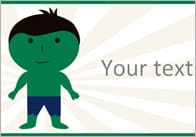Effective communication in early years settings
Regardless of the type of setting, the ability to communicate effectively is crucial for developing positive relationships with children, young people and their families, colleagues and other professionals. Not only does it pave the way for a happy working environment but it is also a core unit of study for most children and young people’s workforce qualifications. So what can practitioners do to ensure that they are communicating effectively?
Communicating well involves the following:
1. Giving your full attention – use eye contact to ensure that you give your full attention to someone
2. Being aware of your body language – seventy per cent of communication is non verbal so beware of sending the wrong message with inappropriate facial expressions or gestures.
3. Listening! Resist any urges to interrupt, nod and smile instead. Hone your empathetic listening skills so that you’re able to listen with sympathy and understanding.
4. Taking account of individual needs – practitioners need to be flexible in the way they communicate and be ready to ask for help as and when required.
5. Being honest about what you know or don’t know – if you don’t have the answer to a question say so and that you’ll find out. But remember to follow through with the information.
6. Being sensitive to cultural differences in communication. In certain cultures direct eye contact is considered disrespectful, in others touching and certain gestures might be seen as insulting so care is needed.
7. Taking care to respect the personal space of individuals as not doing so can sometimes provoke a negative response.
8. Monitoring the environment for factors that may impact on communication such as lighting, layout, excessive noise or over powering smells. A hectic noisy environment can inhibit effective communication so practitioners need to ensure there is a quiet space where children and families can feel relaxed so that practitioners can respond effectively to their requirements.
9. If the person speaks a different language from you, using photographs or other visual aids may help, so too might speaking slowly and carefully but resist the urge to shout.
10. If the other person has a hearing impediment use sign language or visual aids to facilitate communication more effectively.
11. Finally being confident – build confidence in your communication skills by practicing how and what you want to communicate, and role modelling good communication skills.
Sandra Brouet is a Learning and Development Consultant and Director of Early Years CPD an online CACHE accredited training center and provider of informal learning solutions to the early years sector.
Comments
Leave a Reply
Popular Teaching Resources
Stay Up To Date
Sign up for our newsletter and we’ll let you know when we create new early years resources.






PECS is a great counmmication system. I love the way it teaches symbolic counmmication and how it can promote appropriate social interaction during counmmication events by having the children make eye contact or acknowledge the counmmication partner. I have had lots of success getting children to make requests and comments. However, as language abilities expand, it becomes more difficult to use and a less appropriate intervention strategy. If you choose to use PECS, I highly recommend making more than 1 copy of popular picture symbols. They are very easy to lose!